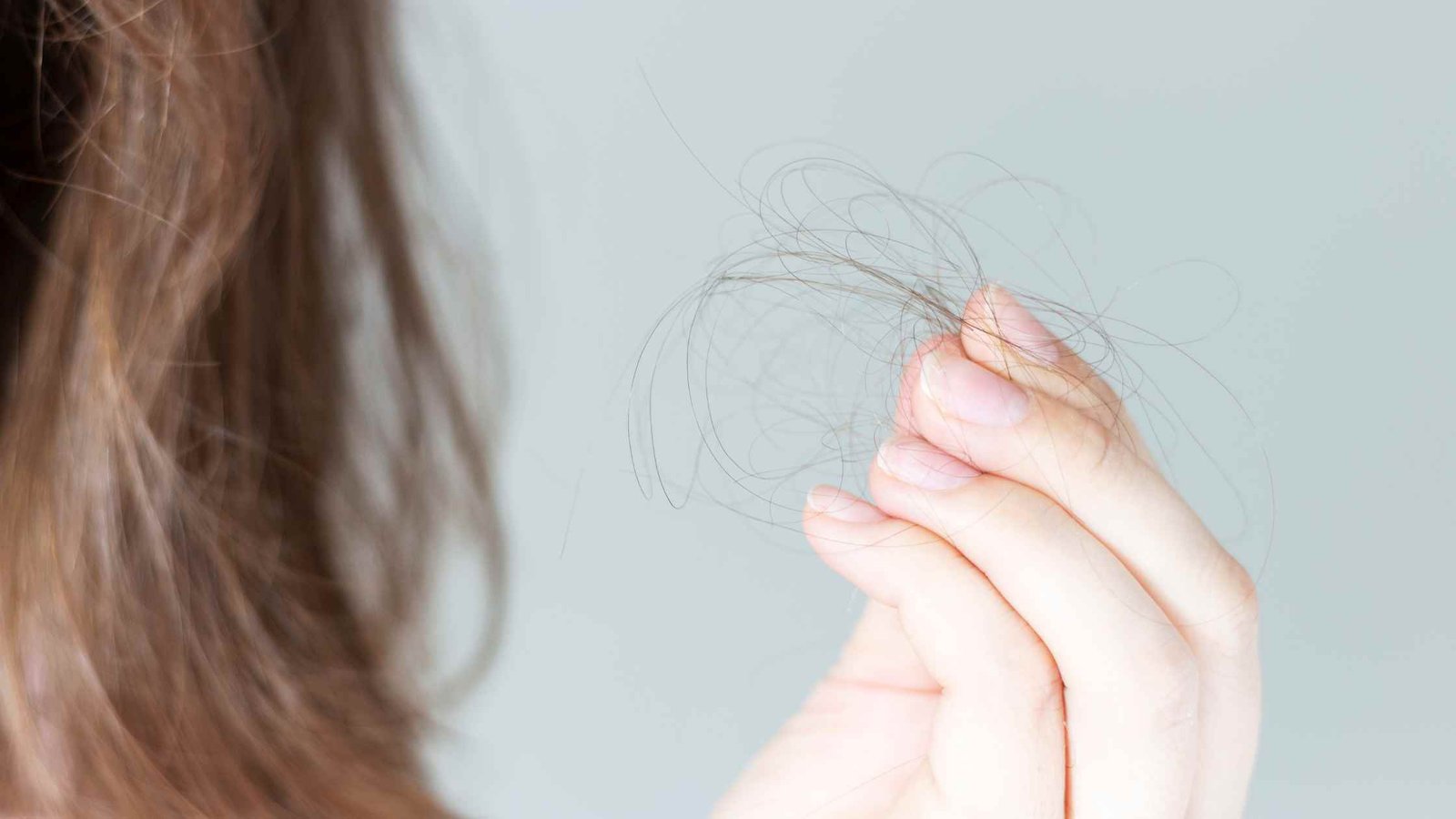How To Protect Hair From Sun Damage Expert Tips to Shield Your Strands.

We all understand the significance of applying sunscreen to safeguard our skin during scorching summer days. However, it’s crucial to recognize that the sun can also harm our hair. Dermatologist Wilma Bergfeld, MD, explains that sun damage can lead to discoloration, dryness, brittleness, split ends, thinning, and frizziness in our hair.
While all hair types are susceptible to sun damage, there are effective methods to protect your tresses and scalp. In this article, we will explore how the sun damages hair and discuss the best ways to shield your hair from its harmful effects.
How the Sun Damages Your Hair
Despite not considering hair as susceptible to sunburn, exposure to UVA and UVB rays can damage the outer layer of the hair strand, known as the cuticle. Dr. Bergfeld highlights that extended exposure to the sun’s rays can have the following damaging effects on your hair:
1. Dryness, Brittleness, and Frizziness
Similar to the damaging effects of excessive use of hair dryers, the sun’s rays can cause dryness, frizziness, and brittle hair. If your hair feels dry, straw-like, or frizzy, it may indicate sun damage. Prolonged heat and dryness can lead to increased breakage, split ends, and overall hair damage. Sun-damaged hair is often dry, unmanageable, and resistant to styling.
2. Color Changes and Premature Graying
A tropical vacation might result in slightly lighter hair, even without color treatment. The sun acts as a bleach on hair, reacting with the melanin and causing an irreversible chemical reaction that removes the color. Additionally, excessive heat damage from the sun can accelerate the graying process, hastening the appearance of gray hairs.
Hair Vulnerability Based on Hair Types
While all hair types are susceptible to sun damage, fine or light-colored hair is particularly vulnerable. Dr. Bergfeld explains that lighter hair lacks the thickness and pigment that can provide natural protection. In contrast, darker, coarser hair is usually oilier and possesses natural protection due to its thickness, darker color, and oil covering.
Hair that is thin, flat, or tightly coiled is also more fragile and prone to sun damage. Factors such as using hot flat irons or rollers, exposure to chlorinated water in swimming pools, or lightening the hair can further increase vulnerability to heat and sun damage.
These activities damage the hair’s protein, keratin, making it more susceptible to sun and heat penetration, resulting in fragile hair strands.
Understanding UV Rays and Hair Damage
UV rays are categorized into two types: UVA and UVB. UVA rays penetrate deep into the hair shaft, causing long-term damage such as color changes and structural alterations. UVB rays, on the other hand, affect the outer layer of the hair, leading to surface damage and dryness. Both types of rays contribute to overall hair damage and should be taken into consideration when protecting your hair from the sun.
Signs of Sun-Damaged Hair
In addition to the dryness, brittleness, and color changes mentioned earlier, there are other signs that indicate sun damage to your hair. These include a lack of elasticity, increased tangling, and a rough texture. Sun-damaged hair may also become more difficult to style and prone to static.
Expert Tips On How To Protect Hair From Sun Damage
The Role of Hair Sunscreen in Preventing Hair Damage
The good news is that you can take precautions to protect your hair from the sun’s harmful rays. Using a hair sunscreen with a suitable sun protection factor (SPF) is an effective way to shield your hair.
Hair sunscreen works by creating a protective barrier on the hair’s surface, guarding it against the sun’s damaging ultraviolet (UV) rays. Typical ingredients in hair sunscreen products include avobenzone, octinoxate, and zinc oxide, which absorb or reflect UV radiation.
It is important to note that hair sunscreen functions differently from sunscreen for your skin. Since hair is composed of dead skin cells, it does not react to sun damage in the same way as the skin (visible redness, burning pain, peeling, etc.).
Instead, hair sunscreen focuses on protecting the cuticle by creating a buffer against the sun’s rays. However, it’s essential to understand that hair sunscreen does not prevent cell damage like regular SPF products designed for the skin.
Protecting Your Scalp from Sun Damage
While protecting your hair from the sun is important, it is equally crucial to provide robust sun protection for your scalp. Although sunburnt scalp might seem uncommon, it is one of the most susceptible areas to sunburn on your body. Therefore, applying a regular SPF product, such as lotion or spray, to your scalp is essential to prevent cell damage caused by UV rays.
While using a spray hair sunscreen can provide some protection to your scalp, it is not sufficient on its own. It is recommended to use specific sprays or balms designed to protect your scalp while leaving your hair less chalky or oily. Alternatively, you can try mineral or powder sunscreen for your scalp.
Related: Embrace The Summer And Achieve Your Weight Loss Goals With These 14 Effective Habits
How to Apply Hair Sunscreen
Hair sunscreen typically comes in a spray bottle and should be applied after styling or brushing your hair. Follow these steps to effectively apply hair sunscreen before going out in the sun:
- Start with clean, dry hair, and apply the sunscreen before or after styling.
- Shake the bottle well to ensure proper mixing of the product.
- Hold the bottle about six inches away from your hair and spray evenly, paying extra attention to the top of your head where your hair parts and is most exposed to direct sunlight.
- Use your fingers or a comb to distribute the product throughout your hair, ensuring full coverage.
- Allow the hair sunscreen to dry completely before going outside.
The Importance of Hydration and Moisture
To counteract the drying effects of the sun, it’s crucial to keep your hair well-hydrated and moisturized. Using hydrating hair masks, leave-in conditioners, and oils can help restore moisture to sun-damaged hair and improve its overall health and appearance.
Protective Hairstyles
Aside from using hair sunscreen and covering your head, opting for protective hairstyles can provide an extra layer of defense against the sun. Braids, buns, and updos can help shield your hair from direct sunlight, reducing the exposure to harmful UV rays.
Post-Sun Care for Hair
After spending time in the sun, it’s important to provide post-sun care for your hair. This includes rinsing your hair with cool water to remove any chlorine, saltwater, or sweat residue. Using a gentle shampoo and conditioner formulated for sun-damaged hair can help nourish and restore your hair’s vitality.
The Role of Diet and Nutrition
Maintaining a healthy diet and proper nutrition can also contribute to the health of your hair. Foods rich in antioxidants, vitamins, and minerals, such as fruits, vegetables, and lean proteins, can support hair strength and resilience, minimizing the impact of sun damage.
Seeking Professional Advice
If you notice severe damage or persistent hair problems despite taking preventive measures, it may be beneficial to consult a professional hairstylist or dermatologist. They can provide personalized advice and recommend specific treatments or products tailored to your hair’s needs.
Additional Ways to Protect Your Hair
Whether you choose to use hair sunscreen or not, covering your head during hot and sunny days provides an added layer of defense against the sun’s rays. Consider the following methods to further protect your hair:
- Wrap a scarf around your hair, wear a wide-brimmed hat, or use an umbrella to shield your hair from direct sunlight.
- Schedule outdoor activities for early or late in the day when the sun’s intensity is reduced, similar to protecting your skin.
- When swimming in chlorinated pools, wear a swim cap or put your hair up in a high bun to keep it dry. After swimming, rinse your hair thoroughly with clear water to remove chemicals like chlorine.
- Remember, summer is a time for enjoyment, and protecting your hair from the sun’s rays should be part of your routine. If your hair has already undergone heat and styling damage, adding an extra layer of protection through hair sunscreen can help prevent further breakage and damage.
Conclusion
In conclusion, it is essential to recognize the harmful effects of the sun on our hair and take proactive steps to protect it. Sun damage can lead to dryness, brittleness, color changes, and other hair problems. However, by implementing the right strategies, you can safeguard your tresses from the sun’s damaging rays.
Using hair sunscreen with appropriate SPF, along with covering your head with scarves or hats, is crucial in minimizing sun damage. Additionally, being mindful of your hair type and taking extra precautions if you have fine or light-colored hair can make a significant difference.
Remember to hydrate and moisturize your hair regularly, opt for protective hairstyles, and practice post-sun care to keep your locks healthy. A balanced diet and proper nutrition also play a role in maintaining hair strength and resilience.
Sources:
Important disclaimer: the content of this website is for informational purposes only and is not meant to replace the advice of a physician or other qualified medical professional. The reader should consult a physician to determine if the information is appropriate for the reader's situation because of the reader's unique needs.Pandahlth is blog and does not provide specific medical or health guidance to its readers. In the event of a medical emergency, you should contact the appropriate authorities or go to the nearest hospital or clinic. Before beginning any dietary, diet, exercise, fitness, medical, or wellness program, you should speak with your healthcare professional.






